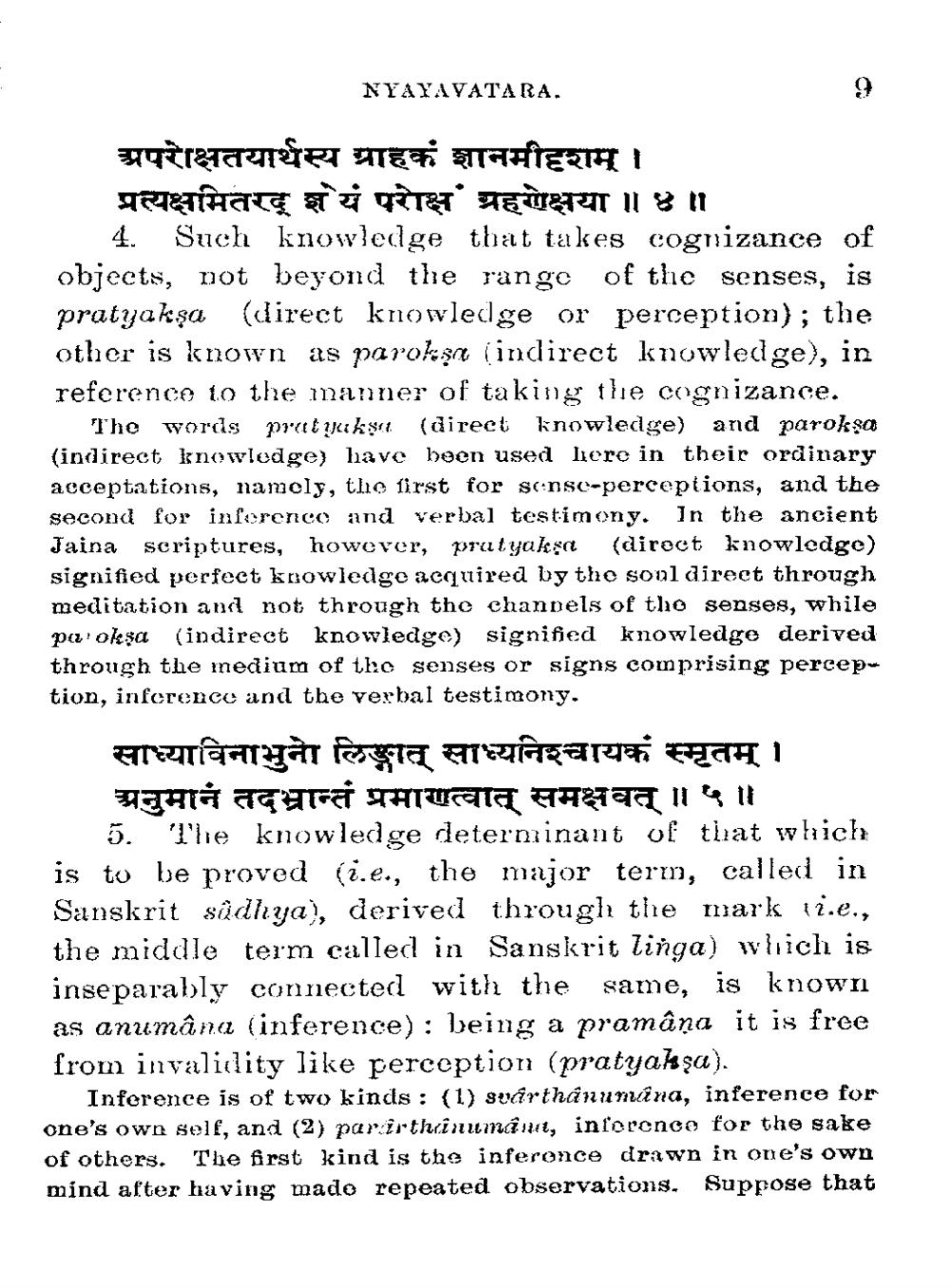________________
NYAYAVATARA.
अपरोक्षतयार्थस्य ग्राहकं शानमीदृशम् । प्रत्यक्षमितरद शेयं परोक्षग्रहणेक्षया ॥४॥
4. Such knowledge that takes cognizance of objects, not beyond the range of the senses, is pratyakşa (direct knowledge or perception); the other is known as parokza (indirect knowledge), in reference to the manner of taking the cognizance.
The words prattikikset. (direct knowledge) and parokşa (indirect knowledge) have been used here in their ordinary acceptations, namely, the first for sense-perceptions, and the second for inference and verbal testimony. In the ancient Jaina scriptures, however, prutyaksit (diroct knowledge) signified perfect knowledge acquired by the soul direct through meditation and not through the channels of tho senses, while pa' oksa (indirect knowledge) signified knowledge derived through the medium of the senses or signs comprising perception, inference and the verbal testimony.
साध्याविनाभुनो लिङ्गात् साध्यनिश्चायकं स्मृतम् । अनुमानं तदभ्रान्तं प्रमाणत्वात् समक्षवत् ॥ ५॥
5. The knowledge determinant of that which is to be proved (i.e., the major term, called in Sanskrit sådhya), derived through the mark ii.e., the middle term called in Sanskrit linga) which is inseparably connected with the same, is known as anumâna (inference): being a pramâņa it is free from invalidity like perception (pratyahşa).
Inference is of two kinds : (1) svarthanumana, inference for one's own self, and (2) parirthinuicêut, intorence for the sake of others. The first kind is the inferonce drawn in one's own mind after having made repeated observations. Suppose that




